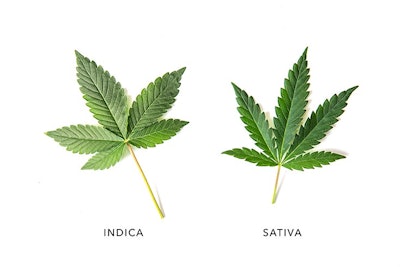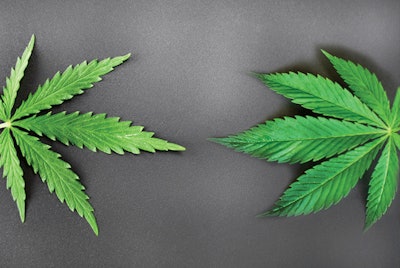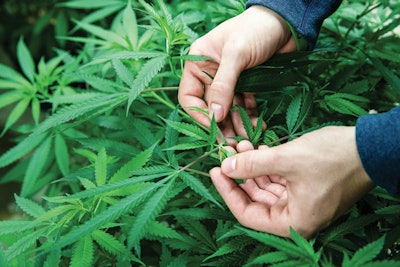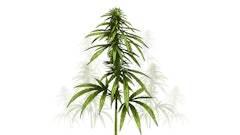

For quite some time, I’ve had the idea to write a column about how we really need to let some of the vernacular of the cannabis industry fade into the past to further help destigmatize the industry. At the very top of my list of words that should probably be abandoned are “sativa” and “indica.”
Of course, it’s a good thing that I didn’t write that piece when I wanted to because I would have looked like an idiot considering a couple of landmark research studies that were recently published. And who knows, perhaps I’ll still look like an idiot when the smoke clears and the dust settles, but at least now this column is better informed than it would have been had I penned it a few months ago.
So, here’s the thing, despite these recently published studies, I believe that just because we could continue to use the industry jargon of sativa and indica doesn’t mean that we should use those terms. In fact, if anything, these articles have strengthened my case as they highlight what an empty and meaningless classification system that has become. Allow me to explain…
A Look at the Sativa/Indica Science
One of these aforementioned studies was published in Plant Physiology1 by Jordan J. Zager and colleagues. Unlike much of the past research that has looked at and segregated cannabis cultivars based upon DNA, the researchers actually isolated and examined RNA from glandular trichomes along with cannabinoid and terpene profiles. While sequencing DNA gives a genetic profile of an organism, sequencing RNA reflects only the sequences that are actively expressed in the cells. This is a way to examine variables within otherwise identical genetics, or the phenotypic expression. The researchers offered some compelling evidence that there are some genetic grounds on which to differentiate between Cannabis sativa L. subgroups (presumably, sativa and indica). In other words, even though the scientific community may still only recognize a single species that is Cannabis sativa L., there is at least some evidence that two or more subspecies do, in fact, exist. Score one for sticking with sativa/indica, right?
To be fair, even though I called this a landmark study (and it is because of their methodology), it’s not the first evidence proving that there are different cannabis subspecies. Welling, et al., published a paper in Euphytica² in 2016 in which the authors argued that properly categorizing cannabis cultivars requires “both cannabinoid profiling and the co-dominant DNA marker assay.” That is to say that there’s presumably a difference in the cannabinoid profiles between the alleged sativas and indicas, and therefore, one must consider the cannabinoid profiles along with the genetic markers in order to accurately classify something as a sativa or an indica. More evidence for sativas and indicas, yes? Looks like I’m 0-for-2.
Additionally, researchers Anna Schwabe and Mit McGlaughlin at the University of Northern Colorado just published a paper in the Journal of Cannabis Research3 in which they found “strong statistical support [for] dividing the samples into two genetic groups. …” But here’s where the whole sativa/indica thing starts to go off the rails because that sentence continues with “[but] the groups did not correspond to commonly reported sativa/hybrid/indica types.”
And it only gets worse from there, because this is definitely not the first time a researcher has pointed out the discrepancy between what the industry calls a sativa or an indica and what the science actually says about it. For example, Hillig published a paper in 2005 in Genetic Resources and Crop Evolution4 in which he analyzed genetic information for more than 150 cultivars. He concluded that “the indica gene pool includes fiber/seed landraces from eastern Asia, narrow-leafleted drug strains from southern Asia, Africa and Latin America, wide-leafleted drug strains from Afghanistan and Pakistan, and feral populations from India and Nepal.” In other words, turns out that whole thing about how sativas have thin leaves and indicas have wide leaves isn’t actually true.
Dr. Ethan Russo, director of research and development for the International Cannabis and Cannabinoids Institute, blasted the way the sativa/indica classification system is used in the industry in a 2016 interview published in Cannabis and Cannabinoid Research5. He stated, “there are biochemically distinct strains of cannabis, but the sativa/indica distinction as commonly applied in the lay literature is total nonsense and an exercise in futility. One cannot in any way currently guess the biochemical content of a given cannabis plant based on its height, branching or leaf morphology." As such, in the absence of a genetic test and full cannabinoid and terpene profiles, we cannot reasonably be certain that a given cultivar is truly a sativa or an indica.

Why Does this Matter?
The entire cannabis supply chain, from cultivators to budtenders, does a disservice to customers, and especially to medical patients and/or individuals who are new to cannabis use, when this kind of meaningless distinction is used. As Schwabe and McGlaughlin stated, “Differences in characteristics within a named strain may be surprising for a recreational user, but differences may be more serious for a medical patient who relies on a particular strain for alleviation of specific symptoms. … There is no consistent genetic differentiation between the widely held perceptions of sativa and indica cannabis types. Moreover, the genetic analyses do not support the reported proportions of sativa and indica within each strain, which is expected given the lack of genetic distinction between sativa and indica.”
In Summary
So, here’s what we know:
1. Despite the fact that Cannabis sativa L. is a single species, there is some genetic evidence that supports the notion that there are at least two distinct subspecies of the plant.
2. However, whatever the ground(s) on which these subspecies distinctions can be made, visual characteristics such as leaf width, plant height or pretty much any other visible plant morphological characteristic is definitely not among them.
3. Therefore, those true subgroup designations all too often do not match up with the sativa/indica labels bestowed on a given cultivar.
4. This lack of clarity is further complicated by the cultivators’ ability to change cultivar names, whether for profit (i.e., to capitalize on the popularity of certain cultivars), perceived uniqueness (i.e., trying to differentiate themselves within the marketplace by having something unique or special), or for literally any other reason under the sun. You can also see profound genetic variability through breeding.
5. This free-for-all with both cultivar names and the sativa/indica labels that accompany them creates a scenario that is inconsistent and unpredictable for the consumer. In the best-case scenario, this is annoying. In the worst-case scenario, it can have severely negative consequences. (For more info on just how problematic cultivar substitution can get, see Dr. Dedi Meiri’s TED Talk6 called “Behind the smokescreen of medical cannabis” in which he tells the story of a failed attempt at substituting cultivars for use in children with autism).
I certainly hope that someday our industry will be more standardized and that we will finally know enough about the various cultivars to be able to talk intelligently about the distinction between cannabis subspecies. However, that day is not today. When that day finally comes, I suspect we also will have gained enough of an understanding of the relationships between the plant’s secondary metabolites (e.g., phytocannabinoids, terpenes, etc.), individual body chemistry, and various disease conditions that the simple sativa/indica categorization will be meaningless anyway—kind of like it is today.
As Russo said in 2016, “I would strongly encourage the scientific community, the press and the public to abandon the sativa/indica nomenclature and rather insist that accurate biochemical assays on cannabinoid and terpenoid profiles be available for cannabis in both the medical and recreational markets. Scientific accuracy and public health demand no less than this.”




















